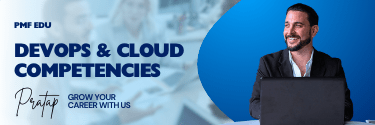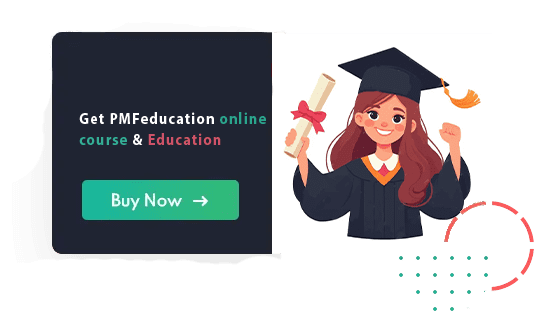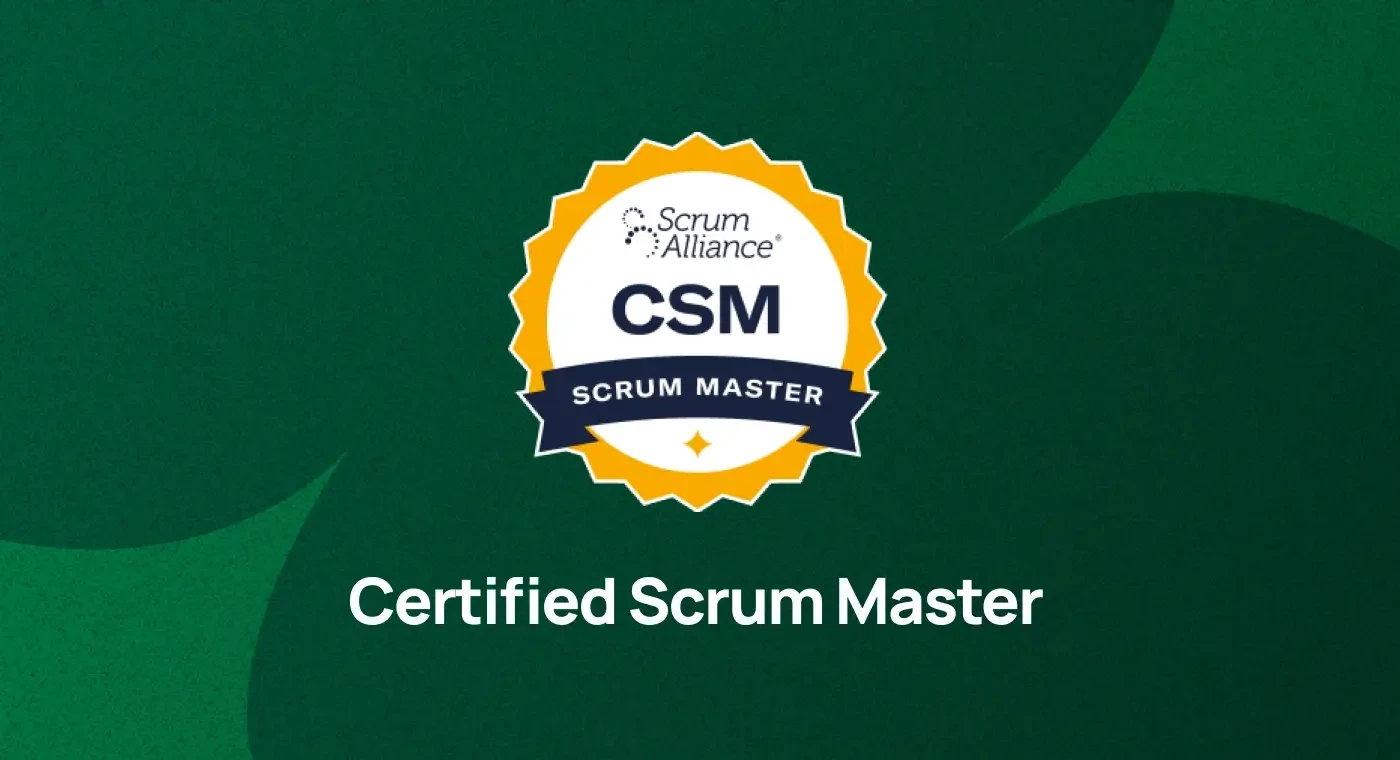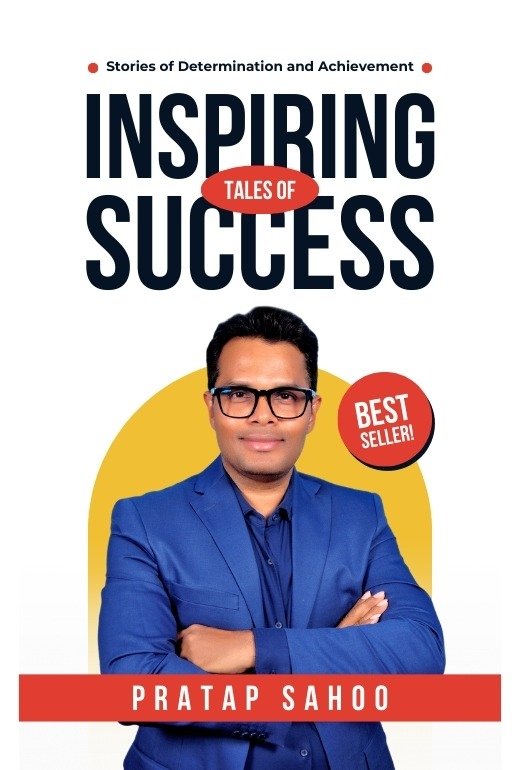Currently Empty: ₹0.00
Scaled Agile
Release Train Engineer Interview Questions and Answers
A product owner in Scrum team who is responsible for the outcome of the project. He maximizes the value of the product by managing and optimizing the product backlog. A product owner’s key responsibility is to define user stories and create a product backlog. No matter whether you are a beginner or an intermediate or an experienced product owner, this write-up will aid you in increasing your confidence and knowledge of product owner. The questions below are divided into various topics catering to product owner. They range from story grooming, user story splitting and estimation, burn down charts and more. Also, this guide provide step-by-steo explanations for every question which will help you understand the concepts well. With Product Owner interview questions, you can be confident about your preparation for the upcoming interview.
Question 1-5
1. What is a Release Train Engineer (RTE)?
A: An RTE is a servant leader and coach for the Agile Release Train (ART), responsible for facilitating ART events and processes, assisting teams in delivering value, and improving ART flow.
2. What does ART stand for in SAFe?
A: ART stands for Agile Release Train.
3. What is the primary role of an RTE during PI Planning?
A: To facilitate the PI Planning event and ensure that planning aligns with business objectives and ART capacity.
4. How many teams typically make up an Agile Release Train?
A: 5 to 12 teams.
5. What is a PI?
A: PI stands for Program Increment – a timebox for planning, execution, and delivery of features.
Question 5-10
What are the core responsibilities of an RTE?
A: Facilitate ART events, resolve impediments, manage risks, and improve flow and delivery.Which SAFe ceremony is the RTE most involved in?
A: PI Planning.What is the difference between a Scrum Master and an RTE?
A: A Scrum Master serves one team; an RTE serves multiple teams across the ART.What is Inspect and Adapt (I&A)?
A: An SAFe event at the end of each PI to assess and improve processes and outcomes.What is a Program Board?
A: A visualization of features, dependencies, and delivery timelines used during PI Planning.
Question 10-15
Define a Feature in SAFe.
A: A service that fulfills a stakeholder need, deliverable within a PI by a single ART.What is WSJF?
A: Weighted Shortest Job First – a prioritization model used to sequence jobs for maximum economic benefit.What is SAFe?
A: The Scaled Agile Framework – a framework for scaling agile practices across large enterprises.What’s the typical duration of a Program Increment (PI)?
A: 8 to 12 weeks.What tool is commonly used to manage ART backlogs?
A: Jira, Rally, VersionOne, or Azure DevOps.
Question 15-20
- What is meant by "servant leadership"?
A: A leadership philosophy where the leader’s goal is to serve the team. - What is a Capability in SAFe?
A: A higher-level solution behavior that spans multiple ARTs. - What is a System Demo?
A: A demonstration of integrated work completed by ART during an iteration. - Who facilitates the Scrum of Scrums?
A: Often the RTE. - What is a Solution Train?
A: A construct used to coordinate multiple ARTs and suppliers to deliver large solutions.
Question 20-25
- What’s the difference between a Feature and a User Story?
A: Features span multiple teams and are deliverable in a PI; stories are smaller and deliverable in an iteration. - What is a Dependency Board?
A: A tool to track and manage inter-team dependencies. - What is ART Sync?
A: A combined Scrum of Scrums and PO Sync event to align teams and manage dependencies. - What is the purpose of the PI Objectives?
A: To align teams and stakeholders around business outcomes for the PI. - What is the Innovation and Planning (IP) Iteration?
A: A buffer at the end of a PI for innovation, planning, and improvement.
Question 25-30
- What does RTE stand for in SAFe?
A: Release Train Engineer. - What is the PI Planning Agenda?
A: A 2-day agenda for vision, planning, risk management, and commitment. - What is ART cadence?
A: A synchronized rhythm across teams in an ART. - How often is PI Planning conducted?
A: Every 8 to 12 weeks. - Who owns the PI Objectives?
A: The Agile Teams.
Question 30-35
- What is the role of the Business Owner in SAFe?
A: To provide business context, review objectives, and accept the PI Plan. - What is ROAMing risks?
A: Classifying risks as Resolved, Owned, Accepted, or Mitigated. - What is a Lean Budget?
A: A budgeting approach that allocates funding to value streams. - How does the RTE help with continuous improvement?
A: By facilitating Inspect and Adapt and tracking improvement items. - What is the Definition of Done (DoD)?
A: A shared understanding of completion criteria for work items.
Question 35-40
- How does an RTE support PI Execution?
A: By coordinating events, tracking progress, and managing risks. - What metrics does an RTE track?
A: Predictability, velocity, flow efficiency, quality, and engagement. - What is backlog refinement?
A: A process to break down and clarify features/stories before planning. - How is team alignment achieved across an ART?
A: Through cadence-based events like PI Planning and ART Sync. - Who creates the PI Roadmap?
A: Product Management with RTE support.
Question 40-45
What is SAFe's House of Lean?
A: A model to describe Lean thinking principles.What is relentless improvement in SAFe?
A: Ongoing efforts to improve processes and outcomes.What is a Release Strategy in SAFe?
A: A plan for how and when to release value to customers.What is Program Backlog?
A: A prioritized list of features for an ART.How is value delivered in SAFe?
A: Through features, enablers, and capabilities.
Question 45-50
What is the RTE’s role in impediment removal?
A: To escalate and resolve systemic issues across teams.What is the SAFe Implementation Roadmap?
A: A series of steps to successfully adopt SAFe.How does an RTE interact with Product Management?
A: Coordinates priorities, delivery schedules, and dependencies.What is SAFe Lean-Agile Leadership?
A: Leaders who model lean-agile mindset and support transformation.How do you measure ART performance?
A: With PI predictability, feature throughput, and flow metrics.
Question 1-5
- How do you manage inter-team dependencies in an ART?
A: Through program boards, dependency mapping, ART Sync meetings, and continuous communication. - How do you handle teams consistently missing PI objectives?
A: Analyze root causes, coach the team, refine estimation, and adjust team capacity or scope as needed. - What metrics are used to evaluate ART performance?
A: PI predictability, feature throughput, velocity trends, defect trends, and engagement surveys. - How do you promote cross-team collaboration?
A: By facilitating Scrum of Scrums, organizing cross-team demos, and aligning shared goals. - How do you prepare for PI Planning?
A: Ensure teams have refined backlogs, align stakeholders, set logistics, and confirm readiness of business context.
Question 5-10
- What is WSJF and how do you apply it?
A: Weighted Shortest Job First is used to prioritize features based on economic value. - How do you track and resolve program risks?
A: Use the ROAM board (Resolved, Owned, Accepted, Mitigated) during and after PI Planning. - What is a Program Kanban?
A: A visual tool to manage the flow of features and capabilities across the ART. - How do you support a new ART launch?
A: Coordinate training, facilitate Value Stream Identification, plan initial PI, and coach leaders. - How do you handle underperforming teams in an ART?
A: Observe, assess team dynamics, provide coaching, and adjust workload or team composition.
Question 10-15
- How do you facilitate effective Inspect & Adapt workshops?
A: By setting clear objectives, engaging teams, presenting system demos, analyzing metrics, and driving improvement backlogs. - What tools do you use to manage PI Planning sessions virtually?
A: Tools like Miro, MURAL, Zoom, Jira, and Confluence are commonly used for remote PI Planning. - How do you coach Product Management in backlog refinement?
A: Help them understand WSJF, ensure features are INVEST-compliant, and prioritize based on value. - How do you manage changing priorities mid-PI?
A: Through collaboration with Product Management, assessing trade-offs, and realigning plans with impacted teams. - How do you drive continuous delivery in SAFe?
A: Encourage DevOps practices, build CI/CD pipelines, and foster a culture of automation and fast feedback.
Question 15-20
- What is the role of the RTE in architectural discussions?
A: Ensure alignment with architectural runway and facilitate collaboration between teams and architects. - How do you handle conflict between teams?
A: Mediate constructively, promote shared goals, and use retrospective insights to address root causes. - How do you coach Scrum Masters across the ART?
A: Offer guidance in facilitation, metrics tracking, and servant leadership principles. - How do you measure the success of an ART?
A: Evaluate business value delivered, team engagement, predictability metrics, and customer satisfaction. - How do you facilitate cross-ART coordination?
A: Through Solution Trains, cross-ART syncs, and shared planning events.
Question 20-25
What is the difference between PI Objectives and OKRs?
A: PI Objectives align teams within the PI scope; OKRs are broader strategic goals with measurable key results.How do you implement SAFe metrics?
A: Collect, review, and communicate key flow metrics and business value achieved, using tools like Jira Align.What do you do if a team fails to deliver committed features?
A: Review causes in retrospectives, adjust commitments, and refine capacity planning.How do you manage scope creep in PI execution?
A: Reinforce WIP limits, maintain strong backlog discipline, and engage Product Management early.What is the RTE’s role in team health assessments?
A: Facilitate surveys, review results, and drive improvement actions.
Question 25-30
How do you maintain alignment with Lean Budgeting?
A: Align feature funding with value streams and strategic themes, and prioritize accordingly.How do you foster a culture of relentless improvement?
A: Promote regular retrospectives, empower teams, and act on feedback promptly.How do you work with the System Architect?
A: Coordinate on technical dependencies, enablers, and architectural runway needs.How do you coach Business Owners on their role?
A: Clarify responsibilities in PI Planning, reviews, and ongoing ART guidance.What’s the role of Communities of Practice (CoP) in SAFe?
A: Support knowledge sharing, skills development, and alignment across roles and teams.
Question 30-35
How do you ensure PI commitments are realistic?
A: Help teams evaluate capacity, historical velocity, and dependency constraints.What is the purpose of solution intent?
A: To define the expected behavior of the solution and constraints that guide development.How do you assess readiness before PI Planning?
A: Review backlog readiness, architecture support, team alignment, and logistics.How do you ensure transparency in ART progress?
A: Use dashboards, team demos, ART syncs, and regular communication.How do you handle large solution coordination?
A: Collaborate with STEs, manage dependencies, and align through Pre- and Post-PI Planning.
Question 35-40
36. What kind of reports do you share with stakeholders?
PI progress, velocity trends, feature delivery, risks, impediments, and PI objectives status.
37. How do you help teams shift from output to outcome mindset?
Promote customer-centric metrics, business value delivery, and problem-solving culture.
38. How do you align your ART with other ARTs in the Solution Train?
Participate in Pre/Post-PI Planning, Solution Train Syncs, and coordinate with Solution Management.
39. How do you track ART-level OKRs or KPIs?
Collect data from teams, review in syncs, and tie metrics to strategic goals.
40. How do you engage leadership in ART ceremonies?
Invite them to demos, planning, I&A, and show value of participation.
Question 40-45
41. What is value stream coordination?
Ensuring multiple ARTs and suppliers are delivering together toward value delivery goals.
42. What’s the role of the RTE in fostering innovation?
Create safe environments during IP iterations, remove blockers, and sponsor team ideas.
43. How do you support regulatory compliance?
Ensure traceability, proper documentation, built-in quality, and alignment with audit requirements.
44. How do you encourage psychological safety in ARTs?
Model transparency, support experimentation, and protect teams from blame culture.
45. How do you ensure continuous improvement across the ART?
Facilitate retrospectives, track action items, and encourage experimentation.
Question 45-50
46. How do you handle feature slippage?
Discuss causes, re-plan, communicate impacts, and adjust scope or timelines.
47. How do you facilitate dependency mapping during PI Planning?
Use visual tools (e.g., Miro, Program Board), involve all teams, and validate during breakout sessions.
48. How do you evaluate the effectiveness of Inspect & Adapt sessions?
Measure number of improvement items implemented, participation, and team feedback.
49. What do you do if business value doesn’t match commitments?
Analyze root causes, review estimation and planning, and improve forecast accuracy.
50. How do you support alignment between Portfolio and ART?
Participate in portfolio syncs, communicate themes to teams, and align roadmaps.
Question 1-5
1. How do you design and optimize flow across multiple ARTs in a large solution context?
By implementing flow metrics, enabling cadence synchronization, aligning on solution-level OKRs, and using Solution Train roles (STE, Solution Architect) to ensure system-level coordination.
2. How do you identify and remove systemic impediments within the organization?
By analyzing patterns across team retrospectives, using metrics (e.g., flow time), engaging leadership for root cause analysis, and escalating issues beyond team control.
3. How do you enable Lean Portfolio Management (LPM) alignment with ART execution?
Through Portfolio Syncs, strategic theme alignment, capacity allocation visibility, and helping teams translate epics to executable features.
4. Describe a time when your ART had a major failure. How did you respond as an RTE?
Example: In a failed PI delivery due to unclear scope and dependencies, I facilitated a root cause workshop, revised planning readiness checklists, and improved backlog alignment practices for future PIs.
5. How do you lead transformation initiatives beyond the ART?
By mentoring other RTEs, aligning with LACE (Lean-Agile Center of Excellence), and guiding systemic improvements across ARTs and Value Streams.
Question 5-10
6. How do you build a culture of relentless improvement in ARTs?
By promoting regular reflection, using metrics for improvement (not blame), rewarding experimentation, and driving action item follow-through.
7. How do you ensure teams deliver business outcomes, not just technical outputs?
By facilitating alignment on value, involving customers/stakeholders in demos, and coaching Product Owners to define clear, outcome-based objectives.
8. How do you approach coaching executives or senior leadership on agile mindset?
By focusing on Lean-Agile principles, presenting metrics and results, using case studies, and building relationships through trust and transparency.
9. How do you evaluate whether a PI was successful?
By reviewing business value delivered vs. planned, stakeholder feedback, team health, and whether objectives advanced portfolio goals.
10. How do you manage ART-level OKRs that conflict with individual team goals?
By prioritizing based on strategic alignment, facilitating cross-functional negotiation, and making trade-offs transparent during PI Planning.
Question 10-15
11. How do you deal with disengaged Product Owners or Product Management?
By providing 1:1 coaching, clarifying their value and impact, involving them in customer feedback loops, and getting leadership support if necessary.
12. How do you scale SAFe in a hybrid environment with both Agile and Waterfall teams?
Establish integration contracts, cadence alignment, hybrid planning sessions, and bridge communication with shared governance structures.
13. How do you facilitate Pre- and Post-PI Planning in a Solution Train?
By coordinating ARTs to align on features and dependencies, ensuring capacity negotiation, and visualizing delivery plans with program boards.
14. What KPIs do you use to assess flow efficiency across the ART?
Flow time, flow load, WIP, throughput, and predictability metrics across the value stream.
15. What are your strategies for building a high-performing ART?
Start with psychological safety, build trust, celebrate wins, encourage ownership, and invest in skill-building and leadership coaching.
Question 15-20
16. How do you handle resistance from middle management during transformation?
By empathizing with their concerns, showing early wins, involving them in solutioning, and clarifying how roles evolve (not disappear).
17. How do you drive feature-level forecasting accuracy?
Promote backlog readiness, WSJF-based prioritization, continuous feedback loops, and track PI predictability.
18. How do you deal with architectural debt that hampers ART delivery?
Facilitate visibility through metrics and demos, support capacity allocation for enablers, and align with architects and tech leads.
19. How do you ensure alignment between customer needs and ART outputs in B2B vs B2C models?
For B2B, include account stakeholders and SLAs; for B2C, use analytics, A/B testing, and direct customer feedback loops.
20. How do you align Lean-Agile budgeting with real-time program execution?
Use dynamic budgeting approaches, Lean business cases, and track investment against outcomes using Epic Hypotheses and MVPs.
Question 20-25
21. How do you maintain ART momentum during organizational chaos or re-orgs?
Focus on core SAFe principles, keep ART events consistent, over-communicate, and act as a stabilizing force for the teams.
22. How do you evolve the RTE role as the organization matures in agility?
Move from facilitator to change leader, focus on strategy alignment, and expand to enterprise-level coaching.
23. How do you promote a data-driven culture across the ART?
Use dashboards, OKRs, and flow metrics to drive discussions, challenge assumptions, and celebrate evidence-based decision-making.
24. What’s the most complex ART you've managed and how did you succeed?
Example: A 20-team ART across 3 countries — succeeded by strict PI Planning discipline, virtual collaboration excellence, and strong dependency visualization.
25. If you could redesign the ART execution model, what would you change?
Focus on better integration with customer feedback, reduce PI length where appropriate, introduce Lean governance guardrails, and improve feedback-to-feature cycles.
Description
The Product Owner is a pivotal role in an Agile team, serving as the primary liaison for stakeholder needs and representing the team’s goals and progress. They are solely accountable for maintaining the quality and value of the team’s output and own the responsibility for managing the product backlog.
Demand for skilled Product Owners is strong across industries. A quick look at job postings shows top companies actively seeking candidates for this role. Currently, there are over 300 open Product Owner positions on LinkedIn in Spain alone. Research indicates that the average annual salary for a Product Owner in the United States is around $105,158, while in India, the average salary is approximately ₹9,97,286 per year, according to Indeed.

